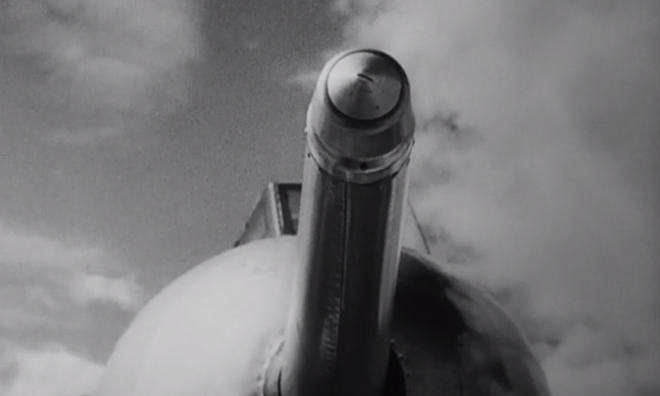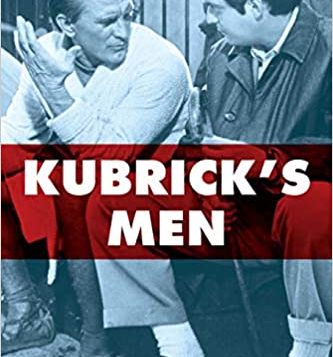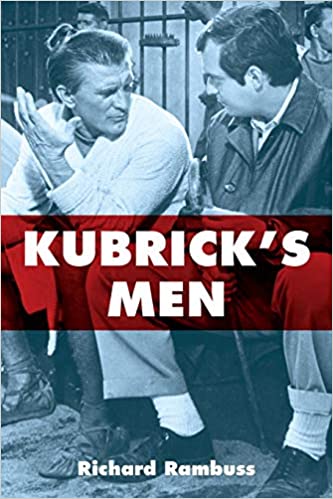STANLEY KUBRICK, after deciding he didn’t want to go to college, went to work for Look magazine as a photographer, and one of his first photo essays starred an extremely handsome boxer named Walter Cartier, whose chiseled good looks Kubrick captured in a way that reminds Richard Rambuss, in his new study of Kubrick’s films, of both Robert Mapplethorpe and Bruce Weber. Boxers, soldiers, and criminals would draw Kubrick’s interest throughout his career, but in Rambuss’ view Kubrick’s real subject was masculinity and its discontents.
The thesis of Rambuss’ new book about Kubrick’s films is quite straightforward: “Kubrick himself wasn’t gay, and he never made a gay movie,” he writes. “On the contrary, Kubrick’s films can come across … as ‘painfully straight.’ [Yet] hardly any Kubrick film goes uninformed by something homosexual somewhere around its story’s edges.” The films may be divided into pre- and post-Production Code (which ended in 1968), but “in Kubrick there is always some added homosexual accompaniment, a revenant bent on returning film after film, from The Killing on.”
Sometimes the homosexuality serves to move a plot along, as when Barry Lyndon watches two soldiers making love in a pond before stealing their clothes. Sometimes it’s because Peter Sellers came up with the idea, like the monologue about “two normal guys” he delivers at the Enchanted Huntress motel to a bewildered Humbert Humbert in Lolita. Sometimes it’s for color, like the pornographic murals in A Clockwork Orange. Sometimes it’s part of the story, like Lawrence Olivier seducing Tony Curtis in Spartacus or the male couple glimpsed in a bedroom of the hotel in The Shining. And sometimes it’s there for no apparent reason, which Rambuss seems to find most intriguing of all—the fact that the homosexual image does not have to be commented on one way or the other.

Masculinity is linked to violence, and violence is often expressed with technology (guns, bombs) which is what movies like Dr. Strangelove, Full Metal Jacket, and A Clockwork Orange, though superficially dissimilar, have in common. But there’s also Paths of Glory, The Killing, Spartacus, Lolita, The Shining, and Eyes Wide Shut, all of which Rambuss examines so effectively that even if the reader has not seen them, it’s almost as if he had—particularly Full Metal Jacket. As Rambuss puts it: “There’s homosexuality. Heterosexuality. Bisexuality. And then there’s Marine Corps sexuality.” In Full Metal Jacket, Rambuss says the imagery amounts to the anal version of Kubrick’s phallic obsession in Dr. Strangelove. It’s not just that Sergeant Hartman asks the recruits he’s training. “Do you suck dicks?” and “Are you a peter-puffer?” As he puts it to one trainee: “I’ll bet you’re the kind of guy that would fuck a person in the ass and not even have goddam common courtesy to give him a reach-around!”

Kubrick’s Men is blissfully free of academic jargon and makes very few claims. Its simple thesis is: take a look at these curious instances of homosexual material in Kubrick’s movies. Most of his films are based on a literary source, and even when the source doesn’t include homosexual scenes, Rambuss points out, Kubrick will add one to his movie version. The reason for this, however, remains mysterious. One never finds out why Kubrick adds the homosexuality, unless perhaps, in any examination of masculinity, homosexuality—which is, after all, another form of masculinity—has its place.
And so, we get Peter Sellers trying to seduce the desk clerk when he checks into the motel in Lolita, the prissy 18th-century furniture in the room at the end of 2001, the two soldier-lovers bathing in the river in Barry Lyndon, the seduction of Tony Curtis’ slave by Lawrence Olivier’s Roman general in Spartacus (“My taste includes both like snails and oysters”), the abusive drill sergeant in Full Metal Jacket, the gay couple glimpsed in the bedroom, one dressed as a dog, in The Shining. In one interview, Kubrick was even asked if HAL the computer in 2001 was gay. (Kubrick said no.)

In the end, the gayest thing about Kubrick’s work may simply be what Rambuss devotes the coda to: the superb technique that made him one of the great image-makers in film history. “Kubrick repeatedly said that for him as a filmmaker it was all about finding a good story. But Kubrick’s movies always arrest the eye.” This was something that Pauline Kael notoriously held against him in her review of Barry Lyndon, when she wrote that “Kubrick isn’t taking pictures in order to make movies, he’s making movies in order to take pictures,” which was what made the film starring Ryan O’Neal, in her opinion, a “coffee-table movie.” In other words, Kubrick was invested in visual beauty for beauty’s sake. And what could be gayer than that?
Kubrick’s Men doesn’t stoop to psychoanalyzing a director who was far smarter than most of his critics. He simply turns a very keen eye on the photography and the films. As such, this book may be of interest chiefly to Kubrick admirers. But even if Rambuss ends up merely wondering why the homosexuality is there, and even if one hasn’t seen all the movies discussed, this is a real labor of love.
Andrew Holleran is the author of the novels Dancer from the Dance, Nights in Aruba, The Beauty of Men, and Grief.







